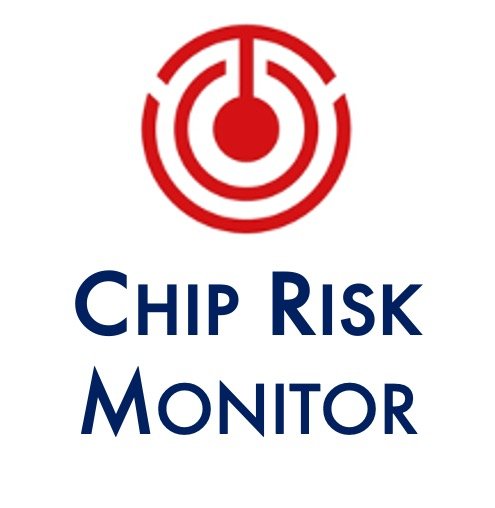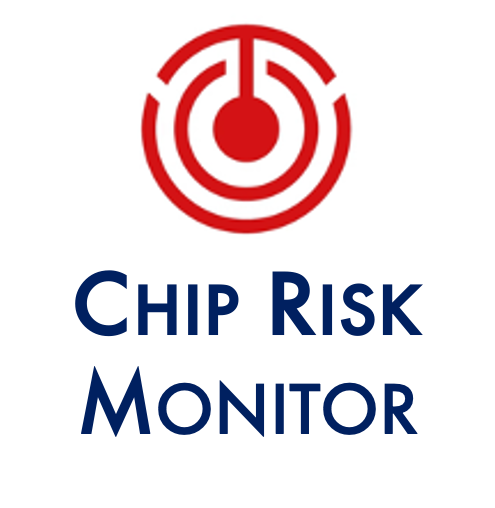Up, Up, and Away
What Spy Balloons Teach About the Risks of China’s Next Generation, Compound Semiconductor Supply Chain Ambitions
Bottom-Line Up-Front
US policy makers need to get serious about compound semiconductors as a critical segment of the semiconductor value chain – and quick. These next generation chips are poised to provide Beijing access to attack surfaces through US data centers and networked critical infrastructure.
The ROUTERS Act is a useful foundation; it can be built upon to guarantee that upstream nodes of the module value chain, including photonic integrated circuits, are prioritized, both to protect against China’s rising champions and promote trusted alternatives. US government designation schemes (e.g., Commerce BIS Entity and Military End Use determinations, DoD Section 1260H list) need to document threat actors across China’s compound semiconductor ecosystem and restrict US capital, downstream customers, and technology from touching Beijing’s next generation chip bets.
Introduction
One year ago, a suspected Chinese spy balloon traversed Alaska, western Canada, and a broad swathe of these United States. It was fully loaded with sensing gadgets and gizmos enabled by compound semiconductors, leveraging those in its mission until it was shot down off the eastern coast of the United States. The spy balloon incident struck a chord with the American public. It was perceived as a brazen affront to US sovereignty by a hostile, foreign power. It should also have been a warning shot about the stakes and status of the next generation semiconductor competition – and the role of compound semiconductors in it.
One year later, the spy balloon episode, and the tech that propelled it, continue to serve as a reminder of a pervasive PRC threat to the United States: Chinese control of the critical upstream, fabrication, and downstream supply chain for next generation semiconductors. This reality is increasingly well understood; various responses to China’s positioning enjoy bipartisan support in Congress. And others have made the case for funding compound semiconductors through the CHIPS and Science Act. Still, a comprehensive, strategic response lags.
The advanced technology propelling China’s spy balloon and its sensing were born of investments from the PRC into compound semiconductors, starting with Huawei’s investment into upstream “feedstock” known as epitaxy production. This epitaxy found its way into the spy balloon’s sensing pods via a company that straddles the US and Chinese markets for photonic integrated circuits (PICs), a subset of compound semiconductors that use light and electricity to transmit data.
China’s champions are increasingly gaining market share globally in photonic integrated circuits, based on innovations pioneered in the US, all while posing new and increasingly problematic operational risks to US critical infrastructure. As networking and sensing proliferate around critical infrastructures in the United States, so, too, do openings for Chinese-linked supply lines to cause disruption. A joint cybersecurity alert recently issued by the Federal Bureau of Investigation (FBI), DHS Cybersecurity and Infrastructure Agency (CISA), and the National Security Administration (NSA) proved as much. China’s “living off the land” strategy leverages attack surfaces presented by outdated routers to approximate what Representative Mike Gallagher summarized as “the cyberspace equivalent of placing bombs on American bridges, water treatment facilities and power plants.”
This challenge is pervasive and under-appreciated. This is like the Huawei threat – but sub-surface and attached to critical and emerging fields.
Narrowing In
So, where should Congress and the Administration look to get to the root of the problem?
CISA’s supply chain risk management (SCRM) framework offers a number of starting points, including the logic-bearing, firmware, hardware, and software nodes that trace back to supply lines and points of manufacture in China. That sequence covers the production steps from epitaxy to PICs to optical transceivers that are incorporated into a variety of critical and emerging technology applications.
PICs, enabled by the compound semiconductor supply chain, are a critical input for enabling information flows in critical infrastructure.
Increasingly, PICs are leveraged in modules deployed for telecommunications networks and in the data centers that form the backbone of artificial intelligence (AI) infrastructure. These data center products are known as “pluggables” or optical transceivers; they are segmented in the marketplace based on the speeds they permit, whether 100 Gbps, 400Gbps, 800 Gbps, or 1.6 terabits per second. These designations are relatively arcane details, but they have been codified in the Biden Administration’s recent AI Executive Order (EO), which designates a related minimum technical standard for AI as “any computing cluster that has a set of machines physically co-located in a single datacenter, transitively connected by data center networking of over 100 Gbit/s”.
China’s Champions
China’s key players for increasing global market share across critical technology applications for photonic chips include midstream and downstream product manufacturers as well as upstream integrated circuit suppliers. The rise of China’s optical module champions over the past 15 years and their dominance of international markets is cited by Chinese industry observers as a demonstrative example of the likely trajectory of the rest of the value chain.
Top 10 Global Optical Module Companies, 2010-2021
As the module segment shows, China appears to be capitalizing on the opportunity to overtake in next generation semiconductors. Beijing’s market share in relevant products has accelerated over the past decade: “China has the largest number of employees in the field and the compound growth of the photonics industry from 2012 to 2020 is close to 23%, and the global share of photonic products has also increased from 10% in 2005 to 30% in 2019.” That growth has allowed domestic Chinese industry to expand its focus from localization to more aggressive international competition.
The companies leading the charge in China include players like Zhongji Innolight, the world’s leading provider of optical module solutions; Fujian Zhongke Optical Core, the leading Chinese company capable of mass-producing laser chips and a key supplier to Huawei and ZTE; Guangxun Technology, a leading optoelectronic device and subsystem solution provider; and, Bochuang Technology’s Shanghai Fengbo subsidiary, the firm executing on Shanghai’s key optical transceiver module research and commercialization project. Upstream suppliers that register frequently in Chinese press and industrial planning recognition as core supporters to those aforementioned companies include Changguang Huaxin, Yuanjie Technology, and Wuhan Minxin.
That set may not be household names in the United States, but their products are pervasive. They are necessary inputs for downstream leaders in the United States and globally. Zhongji Innolight, for example, is the largest or second largest supplier of optical transceivers at speeds of 100 Gbps and above for the majority of US cloud computing, data center, and AI hyper-scalers in the United States.
This layout, and the PRC’s leapfrog strategy, are fueled by central, provincial, and municipal subsidies – a core feature of China’s “State-led, Enterprise driven” model. Yuanjie Technology, for example, is supported as a MIIT-recognized “Little Giant;” its corporate financials detail funding from more than 30 different subsidy programs per year. Those subsidies are earmarked for everything from “foreign and economic trade development” to “subsidies to support 5G industry development.” Another Chinese company, FocusLight, which makes laser optical components, reports subsidies that equal or exceed the company’s profit margin on a regular basis.
These examples reflect a broader ecosystem of subsidized players. That non-market State support allows Chinese companies to undercut global competitors. Financial ties to the Chinese state also hardwire in the security threats that PRC companies carry: Actors beholden to the CCP have proven time and again to be pawns in the Chinese government’s gambit to accrue and coerce through supply chain leverage.
Risks Hidden in Plain Sight
Chinese strategists have diagnosed photonic integrated circuits as a “leapfrog” technology and one uniquely suited to a path of “asymmetric catch up” with the United States. They view PICs as an opportunity to overtake around the corner against the incumbent leaders of the global semiconductor industry. "The photonic technology industrial revolution is an important opportunity for China to ‘change lanes and overtake’ in the field of optoelectronic semiconductors” reads a photonic-focused white paper published by the Shaanxi Optoelectronics Pilot Institute and the Xi’an Branch of the Chinese Academy of Sciences.
Beijing dominating this next generation segment of the semiconductor ecosystem presents a variety of risks. Beijing will leverage control over any node of the semiconductor value chain for geopolitical, coercive ends: China’s restrictions of germanium and gallium underscore as much.
A US policy response should start with recognizing that next generation semiconductors matter: These inputs stand to play a vital role in critical and emerging applications that touch everything from the data storage needed for artificial intelligence to on-board sensors for things like autonomous cars or spy balloons. Next, China’s champions in these fields should be scrutinized for their ties to the Chinese military, Beijing’s military-civil fusion ecosystem, and China’s repressive surveillance state.
More tactically, given the use cases for compound semiconductors and photonic integrated circuits, Chinese dominance of the field also carries immediate cyber security risks. These inputs have logic-bearing roles in hardware modules for data centers on down to networking routers. Securing networks and routers can’t simply be done at the end-product. Even cutting off Huawei or ZTE, for example, does not impact the suppliers who present the actual, operational risk vector. And as networks and internet-of-thing deployments become a core of critical infrastructure modernization, PRC inputs in them threaten a growing segment of every day American life.
Congress is starting to take action with legislation like the ROUTERS Act under development. Those tools should be directed at the core of Beijing’s operation for next generation semiconductors.
Ultimately, trade tools – ranging from tariffs and import and investment prohibitions – should be deployed to guarantee that America can sustain cutting edge capacities vis-à-vis the PRC.


